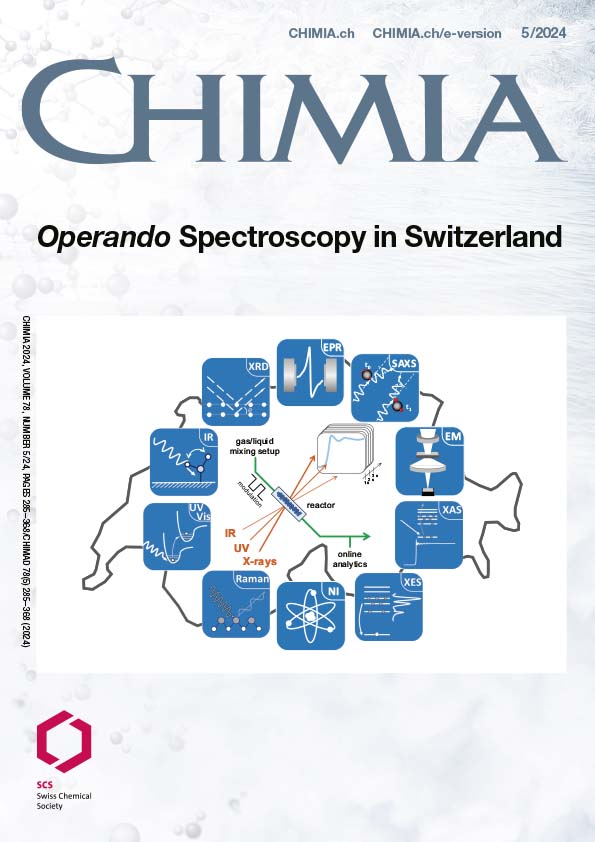Operando Spectroscopy to Understand Dynamic Structural Changes of Solid Catalysts
DOI:
https://doi.org/10.2533/chimia.2024.288PMID:
38822771Keywords:
Cell design, Dynamic structure, Operando spectroscopy, Solid catalyst, Synchrotron methodsAbstract
Solid materials like heterogeneous catalysts are highly dynamic and continuously tend to change when exposed to the reaction environment. To understand the catalyst system under true reaction conditions,operando spectroscopy is the key to unravel small changes, which can ultimately lead to a significant difference in catalytic activity and selectivity. This was also the topic of the 7th International Congress on Operando Spectroscopy in Switzerland in 2023. In this article, we discuss various examples to introduce and demonstrate the importance of this area, including examples from emission control for clean air (e.g. CO oxidation), oxidation catalysis in the chemical industry (e.g. oxidation of isobutene), future power-to-X processes (electrocatalysis, CO2 hydrogenation to methanol), and non-oxidative conversion of methane. All of these processes are equally relevant to the chemical industry. Complementary operando techniques such as X-ray absorption spectroscopy (XAS), X-ray diffraction (XRD), diffuse reflectance infrared Fourier transform spectroscopy (DRIFTS), and Raman spectroscopy were utilized to derive the ultimate structure of the catalyst. The variety of conditions requires distinctly different operando cells that can reach a temperature range of 400–1000 °C and pressures up to 40 bar. The best compromise for both the spectroscopy and the catalytic reaction is needed. As an outlook, we highlight emerging methods such as modulation-excitation spectroscopy (MES) or quick-extended X-ray absorption fine structure (QEXAFS) and X-ray photon in/out techniques, which can provide better sensitivity or extend X-ray based operando studies.
Funding data
-
Deutsche Forschungsgemeinschaft
Grant numbers 460248799;426888090;GR 3987/9-1;INST 121384/73-1;GR3987-13/2 -
Bundesministerium für Bildung und Forschung
Grant numbers 03SF0673B;03EN2065D
Downloads
Published
Issue
Section
License
Copyright (c) 2024 Bidyut Bikash Sarma, Jan-Dierk Grunwaldt

This work is licensed under a Creative Commons Attribution 4.0 International License.







